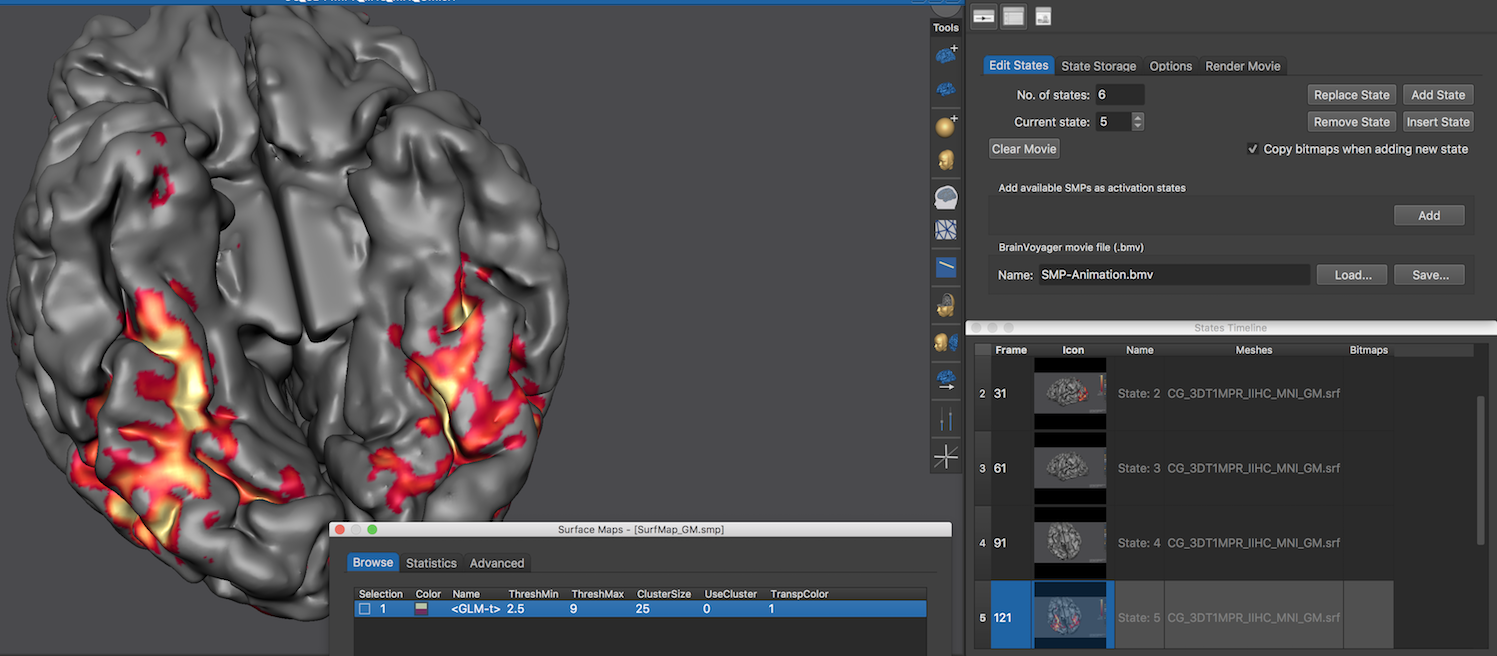BrainVoyager v23.0
Using Surface Maps for Activation Movies
Surface maps (.smp files) can be used to produce movies showing the (average) response to certain stimulus conditions. One or more maps can be created or loaded in the standard Surface Maps dialog (see snapshot below). Note that Movie Studio uses the vertex colors as defined by the surface maps to create the animation, i.e. the surface maps themselves are not refernced by a saved BrainVoyager (.bmv) movie file and are not needed to later load and start the movie.

The easiest way to get a smooth fading-in fading-out movie is to deselect any surface map in state N, turn the respective surface map on for state N+1 and turn all surface maps off for state N+2. This can then be repeated for each condition available as a surface map. When running the resulting movie, activity will gradually build up in the inter-state frames from state N to state N+1 and it will be gradually disappear in the inter-frames from state N+1 to state N+2. Note that you can change the relative speed between the in and out phase by adjusting the number of frames respectively. You may also keep the animation on for an extended period of time by having two successive states in the "on" state. Besides going to baseline after reaching the on state of a surface map, one can also select another surface map, which will produce an activity time course across surface maps, representing e.g. average conditions or the time course of (averaged) hemodynamic responses.
In some cases, a long series of surface maps may be available. An interesting case are dynamic inverse solutions obtained in the context of the EMEG Suite. Such series of surface maps can be quickly converted into an activation movie by clicking the Add button in the Add available SMPs as activation states field in the Edit States tab of the Movie Studio window.
Copyright © 2023 Rainer Goebel. All rights reserved.